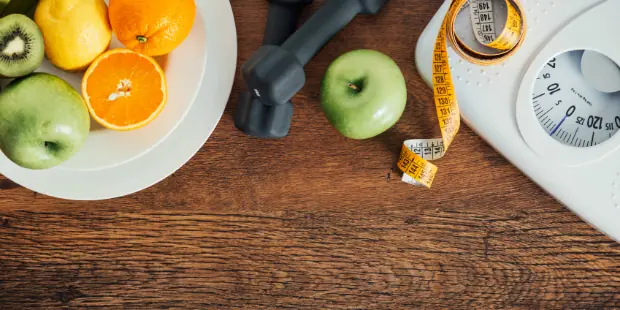
Weight management is often a concern for triathletes. For some, it's about shedding a few pounds to achieve the ideal race weight to improve performance, but for the majority, it's more about fitting into those skinny jeans again or dialing back the clock to your leaner college days. Sometimes this works out, and sometimes not so much.
This became especially clear few years ago when I went to watch IRONMAN Arizona and register for the following year's race. The night before the race I was having dinner at the hotel bar and struck up a conversation with a couple sitting next to me.
Triathlon Events Near You
They had come to watch their son compete in his first IRONMAN. After about 10 minutes of the usual conversation about why someone would tackle such a crazy event, the woman leaned over with an incredulous look on her face and said, "I didn't expect so many of the competitors to be fat."
For the next 15 minutes, I tried to explain that many people take up endurance sports believing that the increased exercise alone will trim them down. In reality, though, ramping up the training doesn't always mean shedding pounds. It's common to underestimate how many calories you consume and overestimate how many calories you actually burn, especially since as your fitness improves, you progressively burn fewer calories at the same level of training.
An "exercise only" approach to weight loss also hides the eating behavior that piled on the extra weight to begin with, which becomes all too apparent when the exercise declines. Many use the high volume training as an excuse to eat high volumes of food. In social psychology and behavioral economics circles this is called the self-licensing effect, more commonly known as the 'I deserve an extra piece of cake because I trained today,' approach to nutrition.
Simply put, it's much easier to consume calories than it is to burn them off. And to make matters worse, now that you've ramped up your training, your appetite has also increased.
Lose Belly Fat First
So how can you modify your daily nutrition to support your training and weight management goals without getting stressed out? Your first priority should be to lose belly fat. Losing belly fat is one of the fastest ways to improve both your fitness and health. Excess girth around the middle has been shown to increase the risk of diabetes, heart disease, cholesterol issues and premature mortality.
The standard approach at this point would be to reduce your daily calorie intake by some percentage or by so many hundreds of calories per day. But I believe the best approach is to start by making better food choices instead.
Choose Healthy Whole Foods First
According to Dr. Mark Hyman, author of The Blood Sugar Solution, approximately 80 percent of food products currently available have sugar added to them. Excess sugar consumption leads directly to that fluff around your midsection, which points back to the increased health risks mentioned above--not to mention slower finishing times.
Instead of reducing calories, focus on replacing junk food and processed foods with balanced meals consisting of whole foods (think carbohydrates consisting of fresh fruits and vegetables, plus healthy fats and lean protein).. In other words, build better nutrition habits before you start cutting calories, which will likely only cause you unnecessary stress and ultimate failure.
What would a balanced meal replacement look like? Examples might include:
- Breakfast: Have a piece of whole fruit, a couple of ounces of lean protein and a small handful of almonds instead of a bowl of cereal with milk and a glass of juice.
- Lunch: Prepare a green salad with some lean protein and pumpkin seeds or avocado with an olive oil-based dressing instead of a sandwich and chips.
In each example, the new balanced meal won't spike your blood sugar and will likely stay with you longer because it has good fats and protein. Keep in mind there's no single right answer. You just want to keep it simple and figure out what works best for you in your life.
Be sure to consider how even these small nutrition changes will impact those around you. Unless you're in complete control of the grocery shopping and what and where you eat, you'll probably have some negotiating to do with the others in your family or household.
The good news is that you're already more than halfway there when it comes to being fit, lean and healthy. You've already committed to a high level of training by deciding to train for a triathlon. The next step is to elevate the importance of your day-to-day nutrition so you can progressively modify your diet in a way that supports your fitness and optimal health without creating unnecessary stress.
Recent Articles:
- 7 Reasons To Do An IRONMAN In 2016
- Athlete Food: Melissa's Stovetop Fajitas
- Indy 500 Winner Tony Kanaan on Triathlon, Training and Driving
Connect with us on Twitter, Facebook, Instagram or Pinterest for more tips, recipes and ideas to fuel your ACTIVE life.



